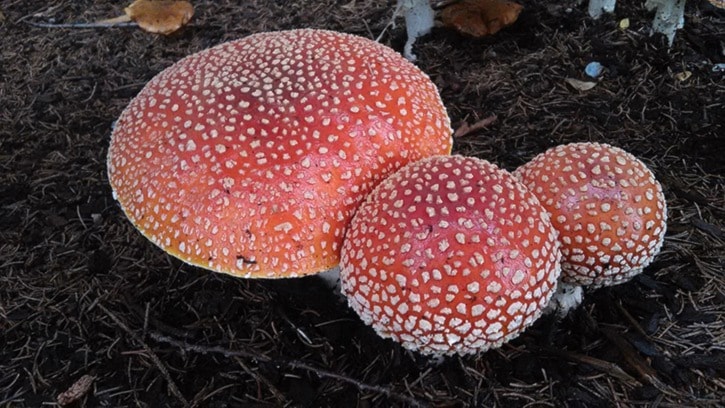Every year we go to the same spot on campus, hoping to see them. And there they were! Fungal wonder in full colour.
I was with the teaching assistants who were going to share this wonder with their lab students in the coming week. We gazed at the colourful amanita mushrooms, almost speechless.This was a good year.
All too soon, we had to wander off in pursuit of other mushrooms, but the charismatic bright red amanitas speckled with white lingered long in my mind.
This time of year is a perfect time to spot such wonders, brought on by the rain. In the Lower Mainland this year we are nearing a record for number of days with rain — virtually every day in October. A perfect year for fungi.
The fungi were actually there all along, underground, forming long thin strands called hyphae, which creep all through the soil looking for food. The mushrooms are but a brief episode in their life cycle.
It seems fitting that this unseen fungal world is also related to a topic we humans avoid in conversation: death.
Although fungi play a role in human nutrition (but note carefully, amanitas are very poisonous), far greater significance is ascribed to their role as decomposers throughout the world. They are needed to bring new life from death.
In a world without fungi and other decomposers, dead organisms would pile up and the nutrients held in their bodies would be unavailable to plants, and in turn the animals that consume plants.
So in the soil underneath those colourful amanitas, a great mass of hyphae — collectively called a mycelium — was thriving, ever expanding, ever seeking the shells of death to turn them into the nutrients of life.
I don’t know how big the mycelium of this patch of amanitas is, but down in Oregon, the world’s largest known mycelium has grown to the size of 1,800 football fields (965 ha). That’s one massive mycelium — some have called it a “humungous fungus among us.”
Indeed, death is often the elephant in the room. Fungi remind us that life comes from death, and many of us believe death is not the end. We can also celebrate new beginnings, and take part in them, like when we plant trees.
There is a tree planting event happening at the Blaauw Eco Forest on 257A St., east of Fort Langley on Friday, Nov. 18 starting at 10 a.m. RSVP to restoration@leps.bc.ca or 604-546-0341 if you plan to take part.
David Clements is Professor of Biology and Environmental Studies at Trinity Western University.
